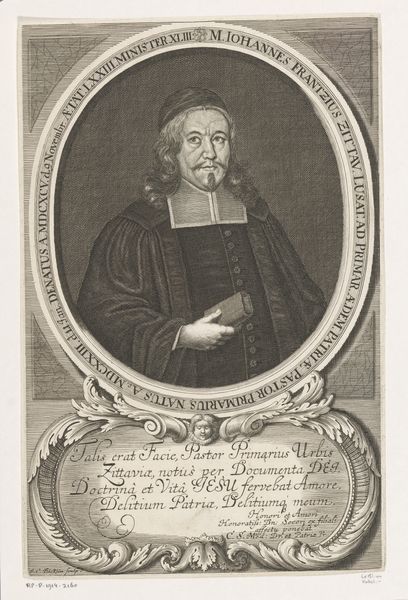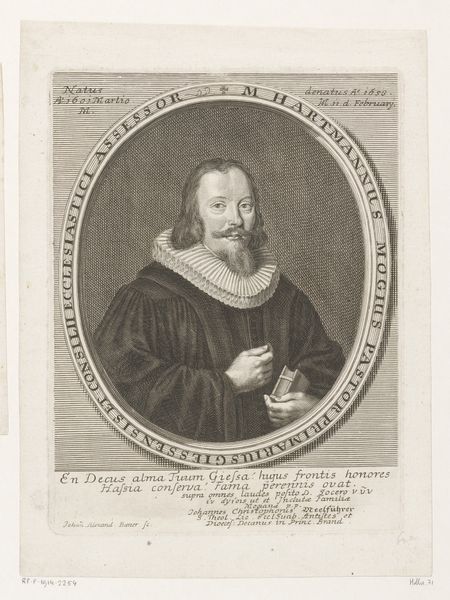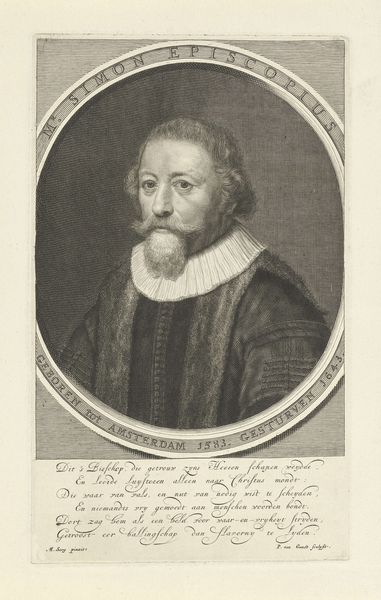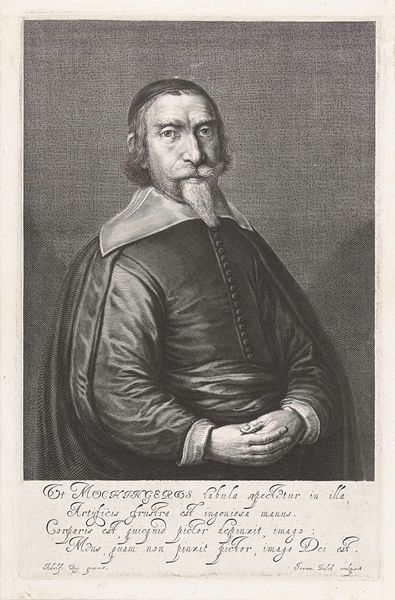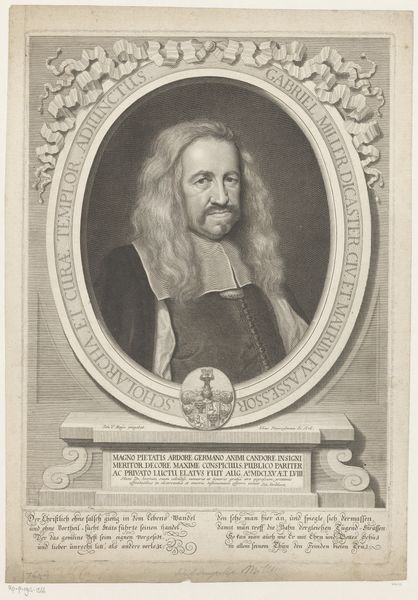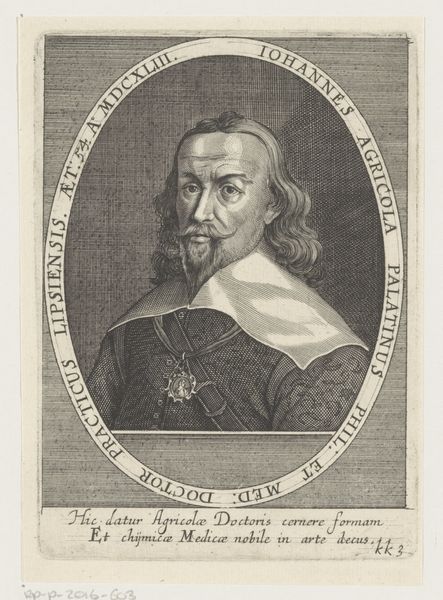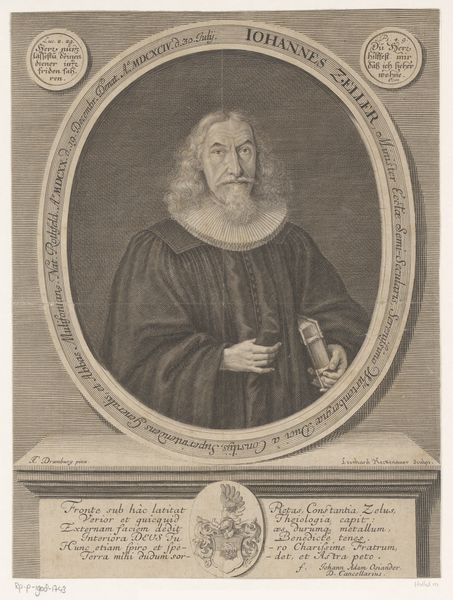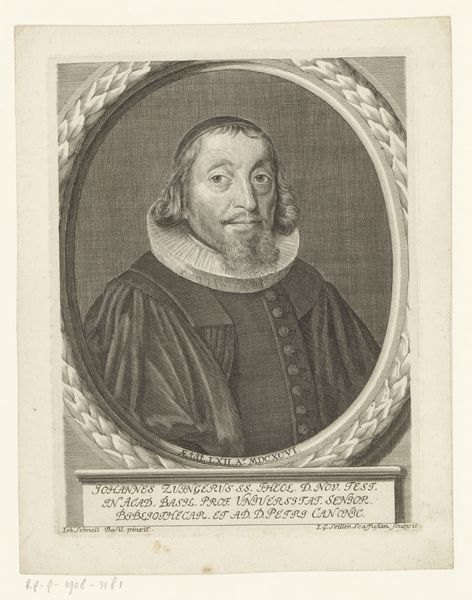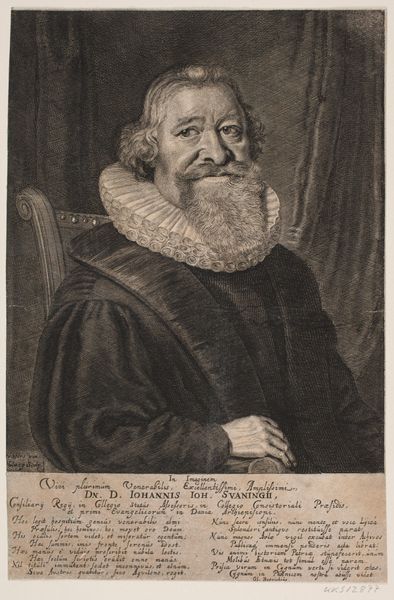
etching, engraving
#
portrait
#
baroque
#
etching
#
historical photography
#
engraving
Dimensions: height 387 mm, width 254 mm
Copyright: Rijks Museum: Open Domain
Curator: Here we have Christoph Weigel’s “Portret van David Ebersbach,” an engraving, etching completed sometime between 1688 and 1725. Looking at the Rijksmuseum’s piece, it feels somber, almost severe, yet meticulously detailed for such a monochromatic rendering. Editor: Absolutely. And what speaks to me is how this image really positions David Ebersbach within a network of power, right? Weigel, the artist, using the graphic techniques of engraving and etching to, in essence, disseminate a carefully constructed persona of Ebersbach, who was, from what I understand, a fairly important religious figure. The very choice of portraiture, the symbolic oval frame… Curator: Yes, but it’s not just about the image, but how it was produced. Engraving and etching weren’t just artistic choices; they were industrial processes. Think of the workshop, the labor division involved in producing these prints en masse. The social and economic structure are vital to understanding this. The texture alone implies many steps of tooling the material... Editor: That labor directly impacted its reach. This wasn't some singular oil painting displayed for an elite few. Engravings like these democratized representation in some ways, bringing images and ideas to a wider audience even if still within a particular socio-economic sphere. The fact that there's text integrated into the work speaks volumes as well. It served didactic purposes. Who controlled literacy then and the making of imagery mattered. Curator: It’s a dialogue, though, between artist and patron. Weigel wouldn't create this independently. This represents Ebersbach's wealth and station allowing him to commission this reproduction. This wasn't passive consumption on either end. Editor: Definitely. It also strikes me how the image is intended to portray not just a man, but a symbol, an embodiment of faith. That central crucifix just below his face underscores this. Weigel and Ebersbach, they both likely knew this portrait was meant to outlive Ebersbach, to cement his legacy. And the layers of that legacy! That’s why this resonates with me. Curator: Looking closer, there's a lot that’s been etched out… revisions, alterations, failures... and it helps underscore the complexity and, dare I say, fragility of historical legacy. Editor: True. It’s a window into a world shaped by faith, power, and, ultimately, the stories we choose to tell—and how we craft those stories in material form, shaping even individual portraiture into a social statement.
Comments
No comments
Be the first to comment and join the conversation on the ultimate creative platform.
